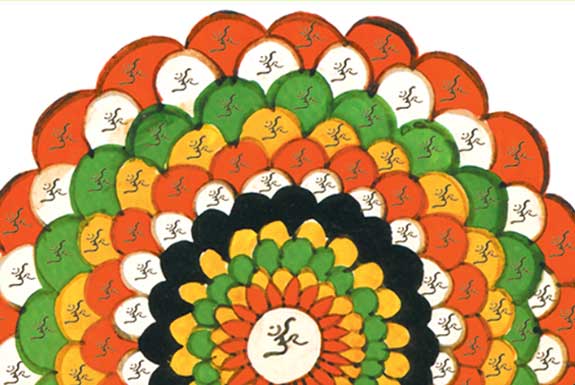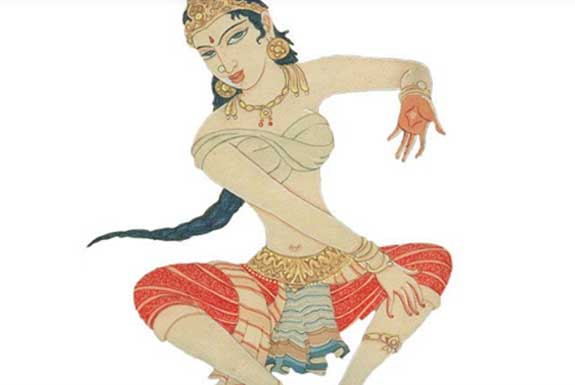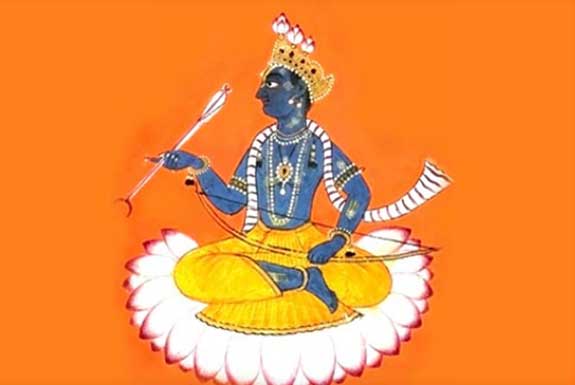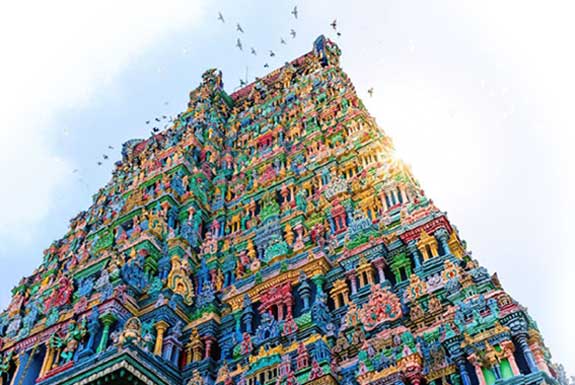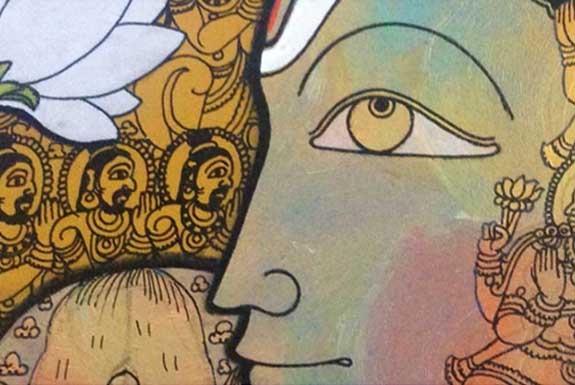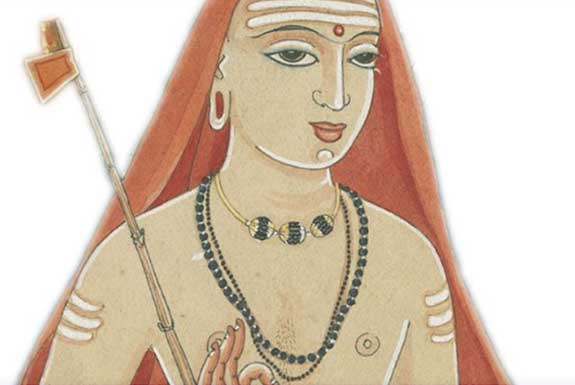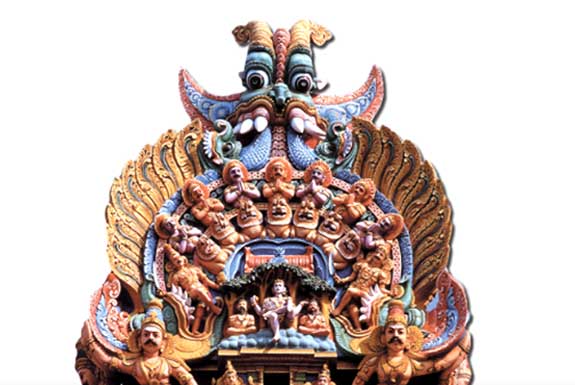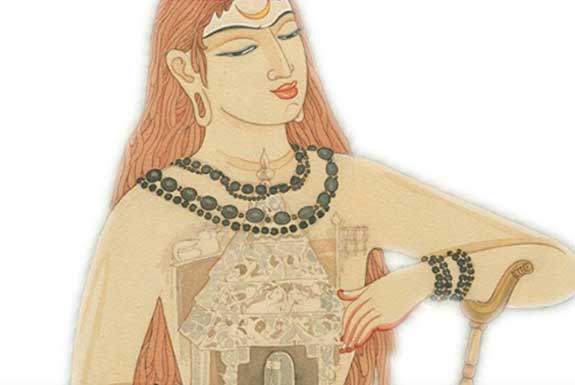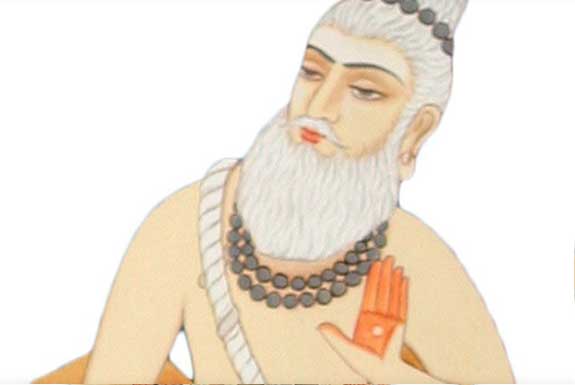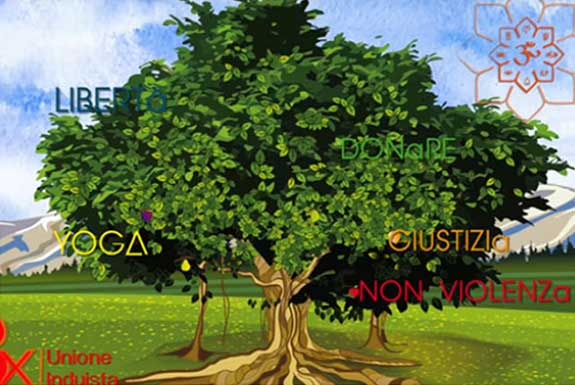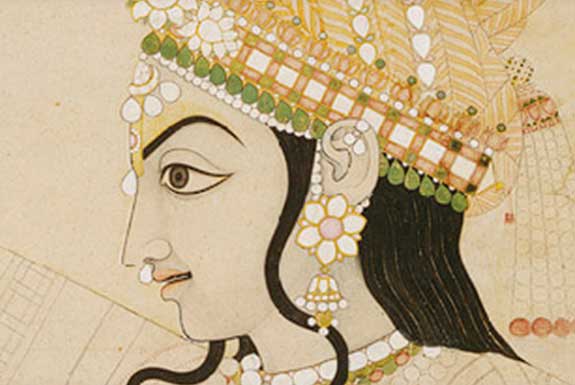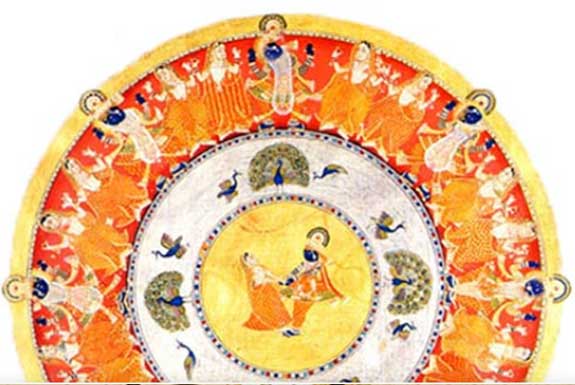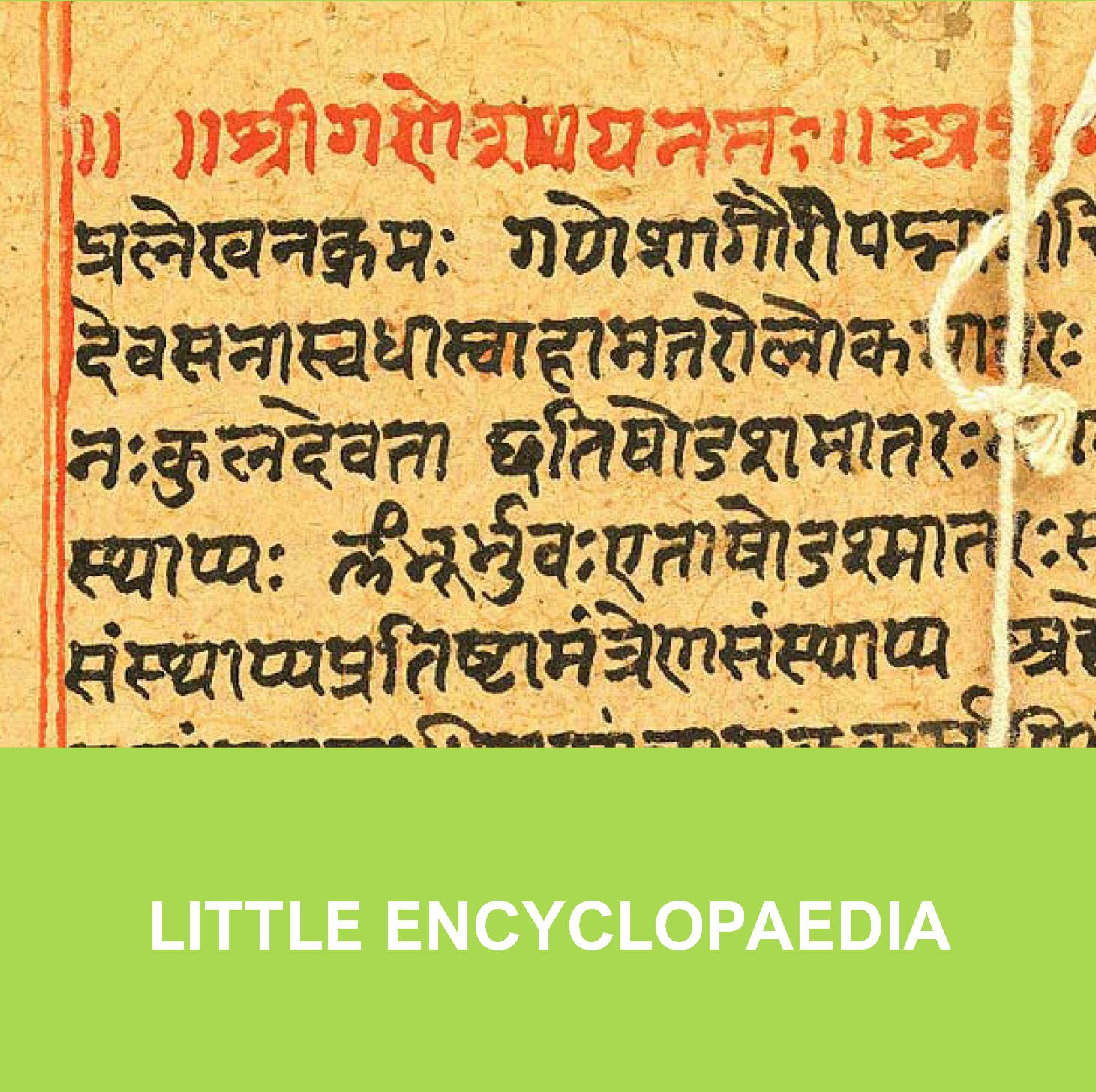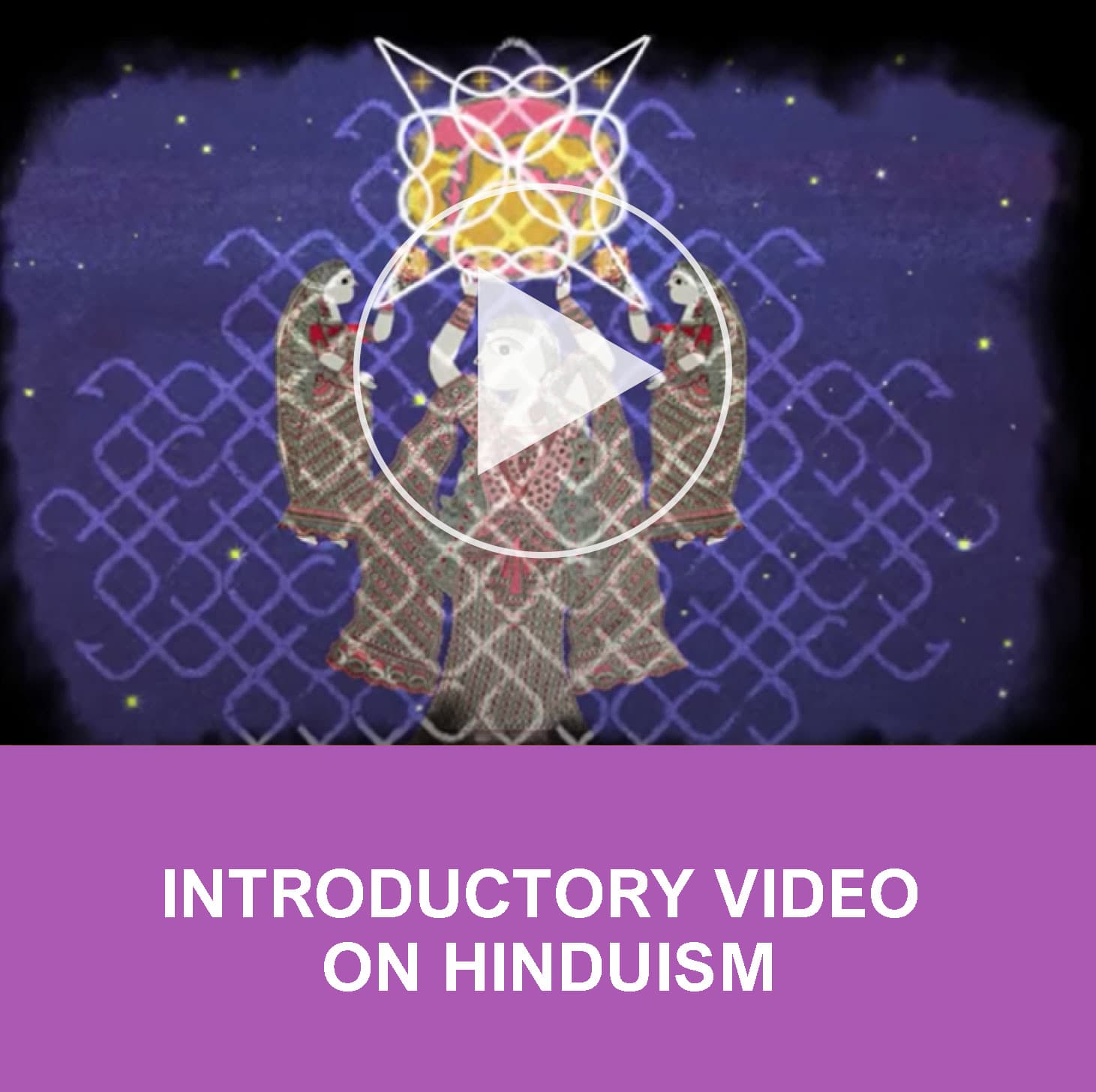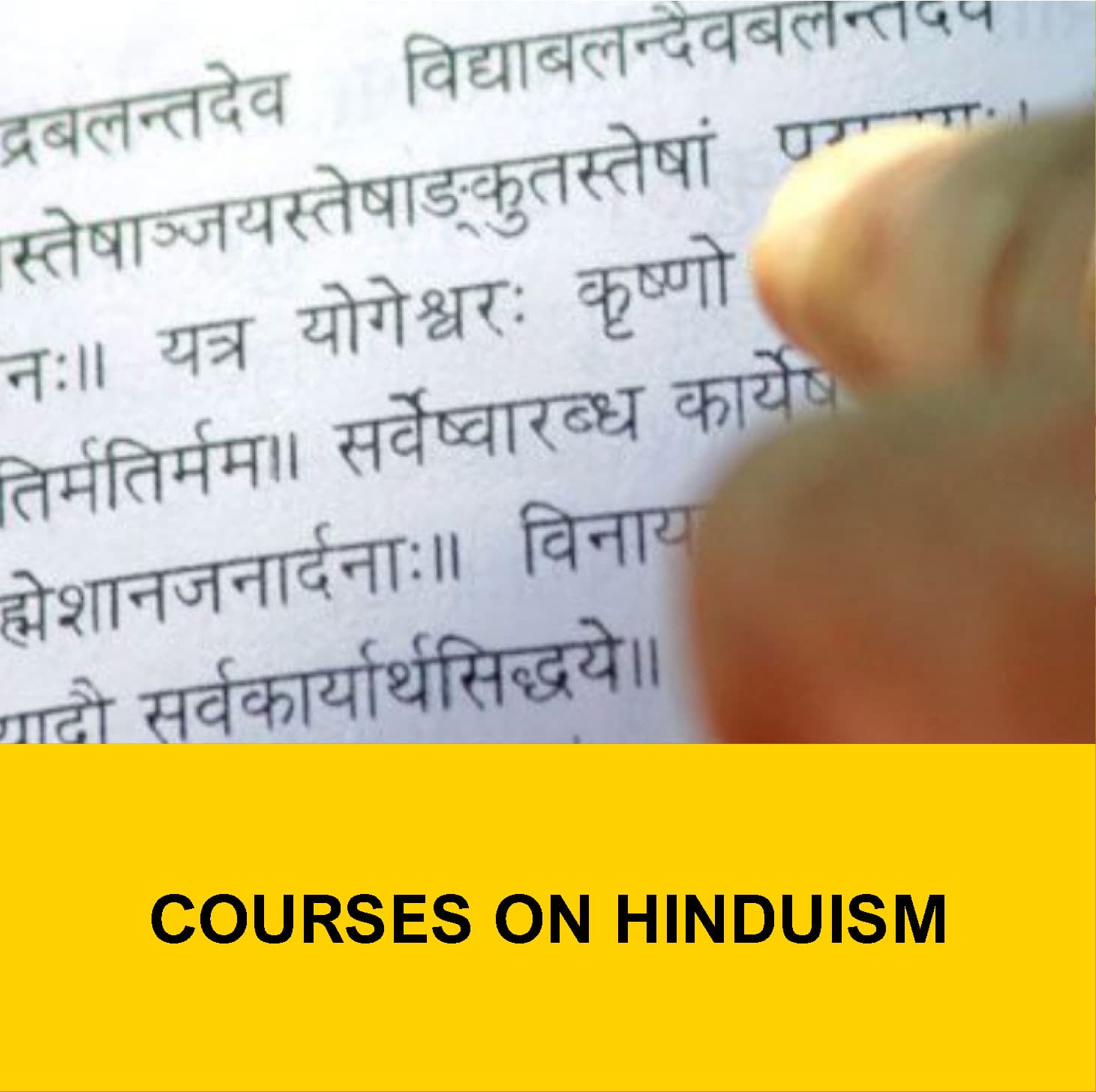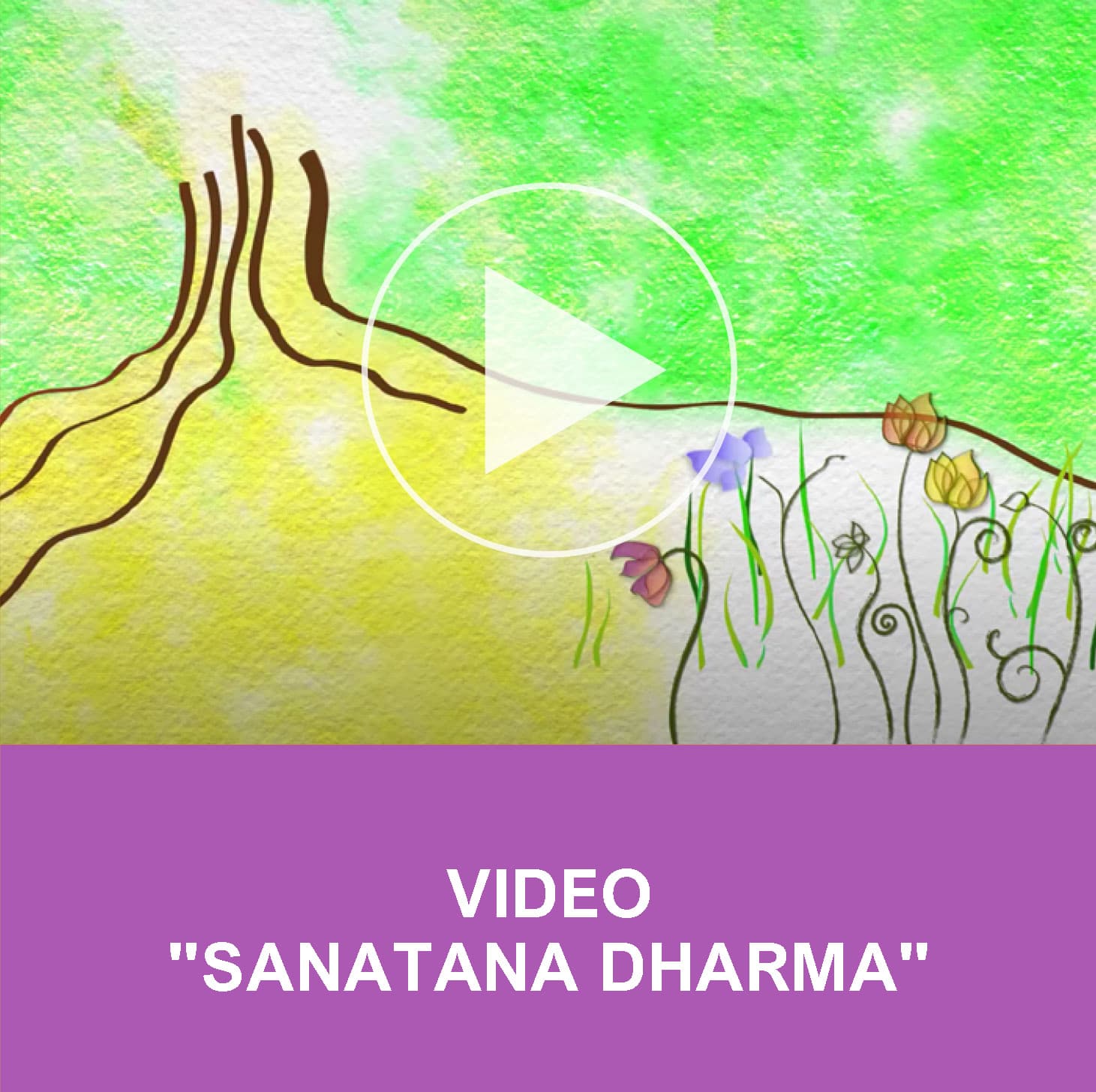LITTLE ENCYCLOPAEDIA
DARSHANA,
VISIONS OF REALITY
The most suitable definition for Indian philosophy, specifically Hindu, is darshana, “vision”. The western conception of philosophy stands out from the eastern one for one main reason: the former is a mainly intellectual speculation, the latter is a practical application, a direct experience of Reality followed by a theorical elaboration.
In fact, darshan refers to a “vision” of phenomenal and divine reality that sages and saints experienced as a result of their ascetic and contemplative discipline.
The main darshan are 6 (sat-darshana). They are astika or orthodox when they accept the authority of the Veda.
They are generally grouped in pairs:
Samkhya by Kapila and Yoga by Patanjali;
Vaisheshika by Kanada and Nyaya by Gautama;
Purva-mimansa by Jaimini and Uttara-mimamsa by Vyasa.
Ancient and Medieval India also gave rise to the nastika or heterodox philosophies (they do not accept the authority of the Veda); among these Buddhism, Jainism, and materialists or Carvaka and Ajivika.
There are also philosophical schools that recognize the authority of the Vedas but are based mainly on Tantra: Kashmir Shaivism, South Indian Shaiva-Siddhanta, Shaiva-Pasupata, the Vaishnava and the Shakta tradition, subdivided in further branches.
Each darshan elaborates its own epistemology, cosmology, ethics and soteriology. The ultimate aim of liberation from pain is the common denominator of all Hinduism.
Epistemology: the means of knowledge, pramana
Epistemology is debated among the different philosophical traditions. Which are the means of knowledge, pramana? Which are valid and exempt from mistake and which are not?
The scriptures list 6 pramana:
Pratyaksa: direct perception
Anumana: inference
Upamana: comparison and analogy
Arthapatti: postulate derived from the circumstances
Anupalabdi: failure to find a perception or its absence
Shabda: the word of a religious authority or the Veda.
Samkhya – metaphysics
This tradition is considered the most ancient among the orthodox Indian systems. Samkhya is ascribed to the sage Kapila and is based on the Kapila-smriti, that has gone lost.
Around 5th century AD, Ishvarakrishna codified its teachings in the Samkhya-karika, written in verses.
Samkhya means “to numerate”; in fact, this philosophy is based on the enumeration of the 25 constituent principles, tattva, of manifestation. Tattva manifest at a cosmological and individual level. From the subtlest and indistinct, mahat, to the most gross matter.
“From prakriti rises the Great [mahat or buddhi], from this the sense of ego [ahamkara], from this the group of 16 [the mind, manas; the 5 sense organs, jnanendriya; the 5 organs of action, karmendriya; the 5 subtle elements, tanmatra]. Then, from 5 of the 16 [the subtle elements] come the 5 gross elements [mahabhuta: ether, air, water, earth, fire].” (Samkhyakarika, 22; quoted in M. Angelillo – E. Mucciarelli, p. 89.)
Of a dualistic nature, Samkhya considers the universe constituted by 2 eternal and self-existing realities: a non-active witness, pure Consciousness, the Purusha, and matter, active but unconscious, the Prakriti. The closeness of Purusha and Prakriti produces an imbalance among the qualities, guna – sattva, rajas and tamas (purity, activity and inertia) – of which Prakriti is constituted. The latter, inspired by the Purusha, begins a process of transformation that culminates in the manifestation as it is perceived.
It accepts the 3 pramana: perception, inference and authoritative word. Samkhya is considered atheistic. The soteriological aim is to discriminate, viveka-khyati, Purusha from Prakriti. This discrimination leads to a state of total freedom, kaivalya, of Purusha from Prakriti.
Yoga – ascesis
The system of Yoga is closely linked to Samkhya. It is difficult to establish the origin of this philosophical school; references to Yoga as a means to discipline of body, mind and breath can be found in the Veda and in the Upanisad. Echoes of Yoga can be found in the seals of the Vallinda civilization proving the extraordinary antiquity of this discipline. Some seals show an ithyphallic figure in siddhasana or sukhasana, identified with Shiva, the Lord of Yoga.
Anyway, the codification of Yoga as a systemic philosophy takes place in the Yoga-sutra by the sage Patanjali (2nd-1st century A.D.). It affirms the dualistic nature of Samkhya, with the Purusha, consciousness, and Prakriti, matter; it introduces a theistic principle too, Ishvara, the ideal model on which we can rest our mind and to which we can offer our actions (Ishvara pranidhanani). On this subject, however, it is debated whether Ishvara is a personal God or if reference is to what has a spiritual value for the individual. Yoga shares some aspects and some terms with Advaita-vedanta; for example, the idea of liberation of the embodied soul, jiva. Unlike Advaita-vedanta that indicates in meditation and in the study of the scriptures the path towards mukti, Yoga suggests a science, a highly articulated spiritual “technology” applied to the body, the mind and breath. The embodied soul is bound to matter, prakriti, due to the 5 great afflictions, klesha (ignorance, ego, aversion, attraction, attachment to life). Due to mental modifications, vritti, the embodied soul identifies with matter.
The soteriological aim consists in ending these modifications (cittavritti-nirodha) through the eightfold path of ashtanga-yoga. It comprises ethical norms and observances, yama and niyama; body control or postures (asana); breath control, pranayama; sense control, pratyhara; fixed concentration, dharana; meditation, dhyana; absorption in the Self, a state in which there are no mental and subconscious modifications, samadhi. Once samadhi has been realized, the human being will finally rediscover the isolation of Purusha and Prakriti and dwell in pure metaphysical isolation, kaivalya.
The 5 yama are:
ahimsa, nonviolence
satya, truthfulness
asteya, non-stealing
brahmacarya, purity, chastity
aparigraha, non-possessiveness, non-greed
The 5 niyamas are:
Saucha: purity of body, mind and word
Santosha: contentment
Tapas: self discipline
Svadhyaya: inner exploration
Ishavara pranidhana: contemplation of Ishvara and surrender to him
Vaishesika – atomistic physics
The systematization of Vaisheshika is attributed to the sage Kanada around 2nd century A.D. and is based on his Vaisheshika-sutra.
Initially, this philosophical system does not have a theistic orientation, but rather it offers means of analysis of reality. Vaisheshika is defined atomistic physics; it postulates that everything in the universe can be reduced to an infinite number of atoms (paramanu): extremely small, invisible and eternal entities. Formation of matter depends on addition or subtraction of these atoms. According to specifity, vishesha, reality can be classified in 6 categories, padartha: substance (dravya); quality (guna); action (karma); generality (samanya); specifity (vishesha); inherence (samavaya).
In elaborations following Kanada’s, his atomistic theory acquires a theistic character since the functionality and existence of atoms derives from a superior Being’s will.
As in the Nyaya, the soteriological aim is liberation from pain, in which one’s true nature can be experienced through the authentic knowledge of reality as a temporary aggregation of atoms.
Despite the common nyaya metaphysical theories, in its classical form Vaisheshika accepts only perception and inference as pramana.
Nyaya – logics
It is based on the Nyaya-sutra, a text composed by Akshapada Gautama around 2nd century A.D. Nyaya can be considered the system of Indian logics; its peculiarity is the methodology that will be adopted by the majority of the following schools of thought. Logics is intended as a means to know, to define error, but also as a dialectic and herstic art.
The history of India is famous for its philosophical debates.
The soteriological aim is liberation from suffering and the only means to realize it is valid knowledge. It is such if it cannot be refuted or subject to doubt and reproduces exactly the sought-after reality. It is therefore opposed to hypothesis, doubt or memory, that are subject to error. In this sense, the Nyaya probably represents the thought closest to Western analytic philosophy.
It is based on 16 categories, padartha, and accepts 4 pramana: perception, inference, deduction or comparison and authoritative source.
Purvamimamsa – exegesis
This school is based on the most ancient portion of the Veda dedicated to ritual (karma-kanda). On the other hand, Uttara-mimamsa is based on the following portion of the Veda characterized by speculative aspects (jnana-kanda). It is based on the Mimamasa-sutra by Jaimini (3rd century B.C. – 2nd century A.D.).
The Purva-mimamsa gives the means to understand and perform the ritual action in its practical aspects and its metaphysical aims. It recognizes authoritative word, shabda, the Veda, as the only means of knowledge. It is a realistic (the world is real) and pluralistic (formed by an infinity of visible and invisible entities) system. Souls are real and infinite, distinct from body, senses and mind.
The first elaboration of this school does not place great emphasis on Divinities, while it later becomes theistic. It recognizes the law of causality, karman, of a subtle Power, Apurva, and the possibility of libertion
Uttara-mimamsa – Vedanta – Shankara’s mystics
The second exegesis, the Uttara-mimamsa, better known as Vedanta, is based on the Brahma-sutra written by Badarayana (around 500-200 B.C.).
The Brahma-sutra, the Upanisad and the Bhagavad-gita make up “the triple source” (prasthanatraya) of the Vedanta tradition. The Vedanta divides in a form of absolute monism, Kevala-advaita, beginning from the experience of Shri Adi Shankara (5th-7th century A.D.); in a form of qualified monism, Vishishtadvaita, with Sri Ramanujacharya (1017-1137 A.D.); in a dualism, dvaita, with Shri Madhvacharya (1197-1276 A.D.); in a dualism and non-dualism, dvaita-advaita, with Nibarka (11th-12th century A.D.); in a pure dualism, shuddha-advaita, with Vallaba (1473-1533 A.D.); and in acintyabheda-abheda, “the unknowable difference and non-difference” with Caitanya (1486-1533 A.D.).
The movement of devotion, Bhakti
Dvaita Vedanta Darshana
As Vishishtadvaita rises from the fervour of Bhakti that, in a sense, contrasts with shankarian intellectualism, dualism comes from the formulation of a new vision of a more personal God, easier to be interpreted by the masses of people who did not know the high philosophical speculations but felt the need of a dialogue with the world of the Divine. So dualism is opposed to Advaita philosophy. Vigorous advocate and populariser of this philosophical vision was Madhva (1238-1317; according to Radhkrishnam 1199-1278). Madhva was a prolific writer, he wrote 37 works known as Sarvamulagrantha, the exegesis of the 10 Upanisad and Bhagavad-gita, 3 comentaries of the Brahma-sutra: Brahma sutrabhashya, Anubhashya e Anuvyakhyana.
Other important philosophers of the dualistic tradition lived between 13th and 17th centuries (Jayatirtha, Vyasa Tirtha e Ragavendra). The philosophical themes dealt with are close to the classical ones and refer to 4 categories: means of knowledge (pramana), that which has to be ascertained that is the object of knowledge (prameya), spiritual practice (sadhana), final liberation (moksha). The theology of the dualistic school is based on panchabheda or 5 differentiations.
According to this doctrine, the Brahman is different from jiva and prakriti. The jiva are different one from the other and from the prakriti and the various evolutions are different one from the other too. The dvaita metaphysics formulates 2 categories: the 1st, independent reality, comprises only God or Brahman, while the 2nd, dependant reality, comprises everything else: Lakshmi, God’s consort, the souls and nature. God does not create, nature and souls are contemporary with him, while Brahman is the only independent reality, all the others are dependent on him. He is a personal God but doesn’t have a physical form, an anthropomorphic image. He is all-pervading, infinite and brings good omens. He is Vishnu, Hari, Narayana, Krishna, Vasudeva and many more names that personify the creator, the destroyer, the preserver. The souls are innumerable; each one of them is unique and veiled by ignorance, avidya, that binds it to the cycle of rebirth.
Differently from the other systems of Vedanta, the dualistic system divides souls in 3 categories: a) those who deserve salvation, mukti yogyas; b) those who migrate eternally, nityasamsarin; c) the obscured, tamoyogyas. The first are sensitive to spiritual values; through spiritual discipline and God’s grace, they may attain liberation. The second group is formed by individuals who are always involved with the sensorial world and do not feel the necessity of an ethical life, nor of spiritual progress. The individuals of the third category are naturally evil and progressively degenerate towards eternal perdition. The jiva, conditioned by avidya, is bound to the cycle of rebirths, samsara, and is totally dependant on God and through his grace only can liberation be attained. (taken from “Hinduism” n°4)
Vishishta Advaita – Vedanta Darshana
This vedantic doctrine, often identified with one of its main exponents, Ramanuja (1017-1137; 1027- ?), has more ancient roots. Its principles were chanted by the 12 alvars among which Namalvar Kuklashekhara, Andal, and taught by acaryas like Nathamuni (824-924 A.D.) and Yamuna (918-1038) too. Ramanuja re-elaborated the set of ancient teachings contained in the Prasthanatraya, and gave them a defined form. He was the highest exponent of this school. His works have been valued so highly that the Vishishtadvaita has been called “Ramanuja darshan”. After Ramanuja’s death, there was a period of sectarian division among his followers that culminated in the final division in 2 movements called vadagallai and tengallai that is, respectively, the northern and southern cults. Each of these movements developed their own canonical texts, the lineage of Gurus and traditions in many very important subjects. The Vishishtadvaita recognizes 3 entities: Ishvara, jiva e prakriti called tattvatraya, comprising Ishvara, absolute and indipendent reality, while jiva and prakriti depend on him. For this reason, the doctrine is called Vishishtadvaita, or non-qualified dualism, a philosophy that accepts, as the name itself suggests, a one and only reality (advaita) but with more attributes or rather with a qualification (vishesha).
To put it differently, it accepts the concept of plurality, inasmuch God exists in a plurality of forms, such as souls and matter. The souls (jiva) are innumerable and controlled by Ishvara as well as part of him. The concept according to which, in addition to absolute reality, “attributes” are recognized too, is the thesis essentially opposed to the Advaita school. Shankara’s Absolute was not satisfying for those who considered love and devotion as the individual’s (bhakta) ultimate aim; it did not consider that purely human relationship with God, a weak human being who invokes the Supreme Being’s help and to whom the helping hand of Grace is given.
In the Vishishtadvaita, attention is concentrated on the relationship of the world with God asserting that God is the absolute reality and that the souls are real too even if totally dependant on God or reality. The Vishishtadvaita creates a bridge, a harmonious fusion of “philosophy” and “religion”, between the rationality of reason and the irrationality of faith and devotion. The world is considered an appearance and God an Absolute, obscure due to an excess of light.
Dvaita Vedanta Darshana
As Vishishtadvaita origins from the fervour of bhakti, dualism comes precisely from the formulation of a new vision of a more personal God, easier to understand for the masses of devotees who didn’t know about philosophy but felt the need of a dialogue with the world of the Divine.
A strong supporter and populariser of this philosophical vision was Madhva (1238-1317; according to Radhakrishnam 1199-1278). He wrote 37 works known as Sarvamulagrantha, and in addition to the exegesis to the 10 Upanishad and to the Bhagavad-gita, he wrote 3 commentaries of the Brahma-sutra: Brahma-sutrabhashya, Anubhashya and Anuvyakhyana. Other important philosophers of the dualist tradition lived between 13th and 17th century (Jayatirtha, Vyasa Tirtha e Ragavendra).
The philosophical themes debated are the classical ones of the philosophical traditions and are referred to 4 categories: the means of knowledge (pramana), the object of knowledge (prameya), spiritual practice (sadhana), final liberation (moksha). The theology of the dualistic tradition is based on the pancabheda or 5 differentiations. According to this theory, Brahman is different from the jiva and from prakriti. The jiva are different one from the other and from prakriti and the various evolutions of it are different one from the other.
Dvaita metaphysics formulates two categories: the first one, an independent reality, is constituted only by God or the Brahman; the second, a dependent reality, is constituted by all the rest: Lakshmi, God’s consort, the souls, nature. God does not create, nature and souls are contemporary with him, but the Brahman is the only independent reality, all the others are dependent on Him. He is a personal God but does not have an anthropomorphic image. He is all-pervading, infinite and He brings good omens. He is Vishnu, Hari, Narayana, Krishna, Vasudeva and many more names that personify the creator, the destroyer, the preserver. The souls are innumerable; each one is unique and veiled by ignorance, avidya, that binds to the cycle of rebirth.
Unlike other Vedantic systems, the dualistic system divides souls into three categories: a) those who are worthy of salvation, mukti yogyas; b) those who transmigrate eternally, nityasamsarin; c) those who are dominated by darkness, tamoyogyas.
The beings of the first category are sensitive to spiritual values; through spiritual discipline and God’s grace, they can achieve liberation. The second group is made up of individuals who are always involved in the sensory world and feel no need for an ethical life, nor for spiritual progress. Those belonging to the third category are, by nature, radically evil and progressively degenerate to an eternal perdition. The jiva, conditioned by avidya, is bound to the cycle of rebirths, samsara, and is totally dependent on God through whose grace alone he will attain final liberation. (taken from Hinduism n.4)



